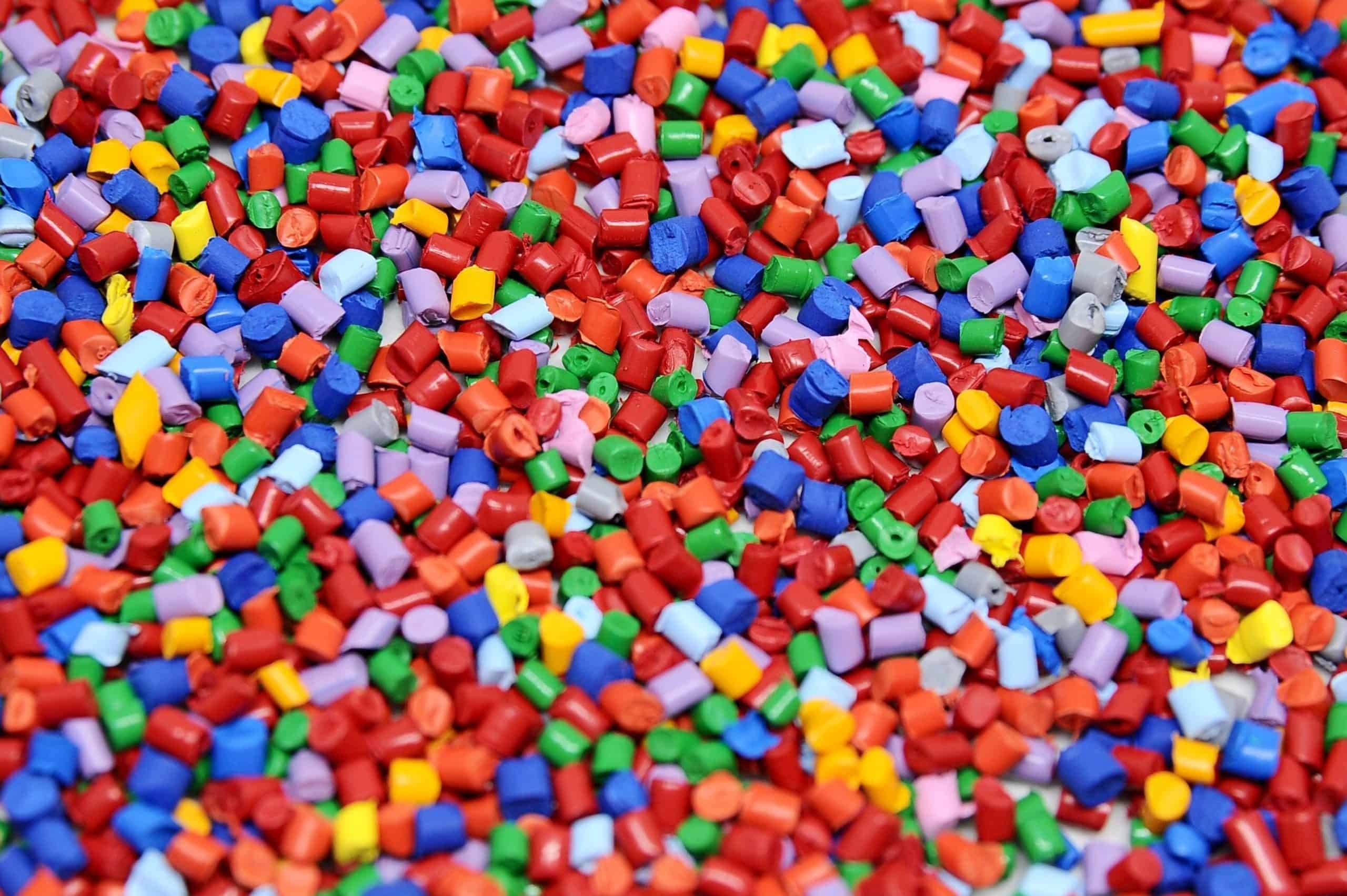
Polyolefins
What are polyolefins?
Polyolefins are a family of thermoplastics that include polyethylene and polypropylene. They are produced by polymerising respectively ethylene and propylene, mainly obtained from oil and natural gas but can also be derived from renewable resources (e.g., sugar cane). Their versatility has made them the most largely used type of plastics, representing almost 50% of the European plastics consumption.
Properties of polyolefins
There are four types of polyolefins:
● LDPE (low-density polyethylene) is defined by a density range of 0.910 0.940 g/cm3. It can withstand temperatures of 80°C continuously and 95°C for a short time. Made in translucent or opaque variations, it is flexible and tough.
● LLDPE (linear low-density polyethylene) is a substantially linear polyethylene, with significant numbers of short branches, commonly made by copolymerisation of ethylene with longer-chain olefins. LLDPE has higher tensile strength and higher impact and puncture resistance than LDPE. It is very flexible and elongates under stress. It can be used to make thinner films and has good resistance to chemicals. It has good electrical properties. However, it is not as easy to process as LDPE.
● HDPE (high-density polyethylene) is known for its large strength-to-density ratio. The density of HDPE can range from 0.93 to 0.97 g/cm3 or 970 kg/m3. Although the density of HDPE is only marginally higher than that of low-density polyethylene, HDPE has little branching, giving it stronger intermolecular forces and tensile strength than LDPE. It is also harder and more opaque and can withstand higher temperatures (120°C for short periods).
● PP (polypropylene) is the commodity plastic with the lowest density, between 0.895 and 0.92 g/cm³. Compared to polyethylene, it has superior mechanical properties and thermal resistance but less chemical resistance. PP is usually tough and flexible, especially when copolymerised with ethylene.
How polyolefins are used
The specific qualities of each type of polyolefin lend them to differing applications:
● LDPE: cling film, carrier bags, agricultural film, milk carton coatings, electrical cable coating, heavy-duty industrial bags
● LLDPE: stretch film, industrial packaging film, thin-walled containers, and heavy-duty, medium and small bags
● HDPE: crates and boxes, bottles (for food products, detergents, cosmetics), food containers, toys, petrol tanks, industrial wrapping and film, pipes and houseware
● PP: food packaging, including yoghurt, margarine pots, sweet and snack wrappers, microwave-proof containers, carpet fibres, garden furniture, medical packaging and appliances, luggage, kitchen appliances, and pipes
Polyolefin innovations
New technology is being developed by our members in collaboration with major players in the pipe industry to improve the performance and expand the range of applications of polyolefin pipes, which is urgently needed to provide drinking water and sanitation for the growing global population. By optimising the formulation of dedicated PE and PP resins for biaxial stretching, manufacturers will be able to boost the key properties of pressure pipes to unprecedented levels, enabling lighter, stronger and more energy- and cost-efficient pipe systems.
Recycling and reuse of polyolefins
Largely used in packaging, polyolefins represent nearly two-thirds of all post-consumer plastic waste, while mechanical recycling capacities installed in Europe represent circa 23% (4.1Mt) of all plastic waste of this type . Unlocking the essential investments that will increase EU plastics recycling capacity is dependent on ensuring that the maximum amount of plastic waste is captured through improvements to collection and sorting.
Increasing numbers of European countries are rolling out systems to include new polyolefin-based types of waste (e.g., films, rigid packaging other than bottles) in household separated collections for recycling. The main end market for recycled polyolefins is non-food contact applications (building and construction, agricultural products, non-food packaging), as regulations prevent mechanically recycled polyolefins from being used in food contact applications. However, new chemical recycling technologies can increase the recycling possibilities for polyolefins by allowing food-contact uses for recycled plastics, as well as the recycling of mixed polyolefins waste, such as multi-layer packaging.
Several polyolefins applications offer reuse opportunities at the end of the first service life, particularly in industrial and commercial packaging, such as PP crates or boxes, HDPE intermediate bulk containers, etc.
Further reading
· Read about circular polyolefins
· Read how our members are innovating
· Rigid polyolefins
· Consistent collections of flexible plastics